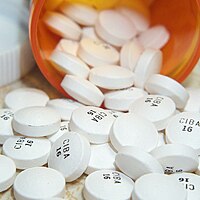Abbreviated New Drug Application

An abbreviated new drug application is like a report that a company sends to the government when they want to make a medicine that is similar to a medicine that is already on the market.
Think of it like going to the store to buy a toy. The toy you want is called "Teddy Bear". You look at the store shelf and see that there are many different types of "Teddy Bear" toys: big ones, small ones, soft ones, and hard ones. You notice that some "Teddy Bear" toys have different colors or designs on them, but they all look similar, right?
Now imagine a company wants to make a new type of "Teddy Bear" toy. They want to sell their toy in the store next to all the other "Teddy Bear" toys. But, they can't just make any old toy and call it "Teddy Bear". They need to make sure their toy is safe and works as well as the other "Teddy Bear" toys. So they need to do some research and testing.
This company will put together an abbreviated new drug application to send to the government. It's like showing the government their research and test results to prove that their "Teddy Bear" toy is safe and effective. The government will then review the report and decide if the new "Teddy Bear" toy can be sold in the store.
Just like how the company needs to prove that their new "Teddy Bear" toy is similar to the other "Teddy Bear" toys in the store, companies that want to make new medicines need to prove that their medicine is similar to a medicine that is already on the market. They need to show that their medicine is safe, effective, and works the same way as the medicine that is already available. This is done through an abbreviated new drug application, which is like a report that goes to the government for review.
Think of it like going to the store to buy a toy. The toy you want is called "Teddy Bear". You look at the store shelf and see that there are many different types of "Teddy Bear" toys: big ones, small ones, soft ones, and hard ones. You notice that some "Teddy Bear" toys have different colors or designs on them, but they all look similar, right?
Now imagine a company wants to make a new type of "Teddy Bear" toy. They want to sell their toy in the store next to all the other "Teddy Bear" toys. But, they can't just make any old toy and call it "Teddy Bear". They need to make sure their toy is safe and works as well as the other "Teddy Bear" toys. So they need to do some research and testing.
This company will put together an abbreviated new drug application to send to the government. It's like showing the government their research and test results to prove that their "Teddy Bear" toy is safe and effective. The government will then review the report and decide if the new "Teddy Bear" toy can be sold in the store.
Just like how the company needs to prove that their new "Teddy Bear" toy is similar to the other "Teddy Bear" toys in the store, companies that want to make new medicines need to prove that their medicine is similar to a medicine that is already on the market. They need to show that their medicine is safe, effective, and works the same way as the medicine that is already available. This is done through an abbreviated new drug application, which is like a report that goes to the government for review.
